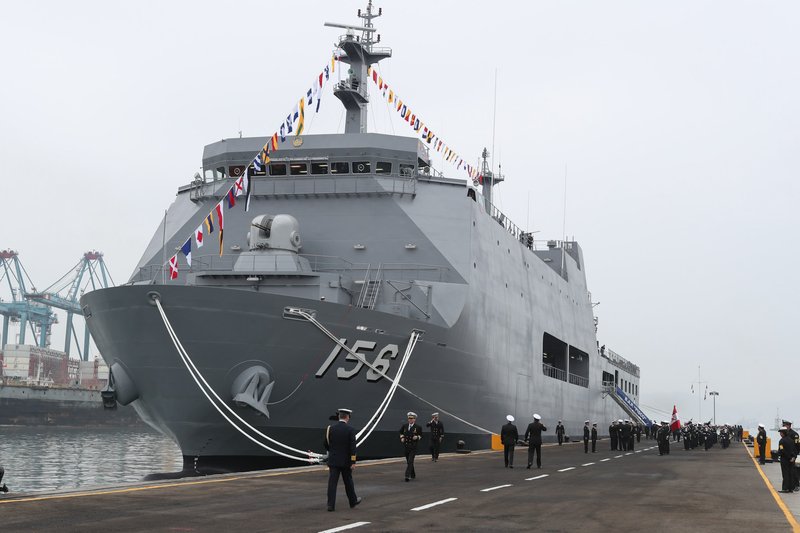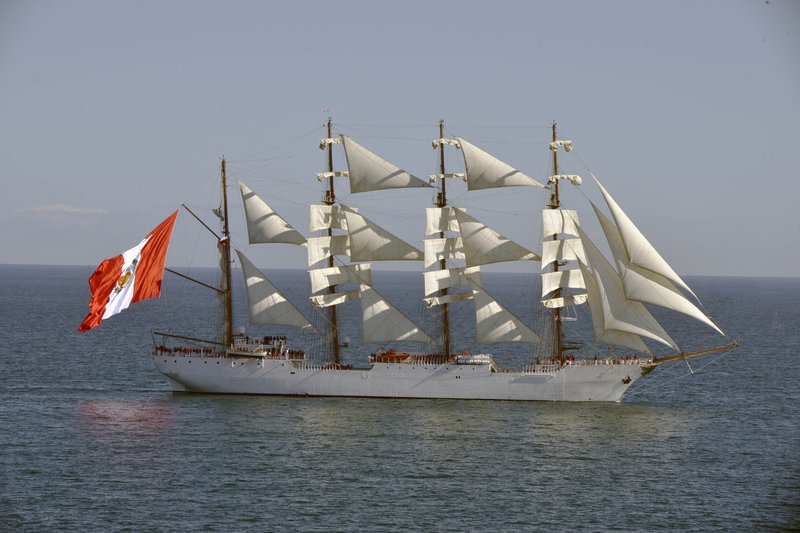How Peru is taking targeted action to modernise its navy
Recently, the Peruvian government approved a dedicated budget for the replacement of frigates, OPVs, patrol ships and logistics vessels. Beyond providing a much-needed upgrade, these programmes are also a unique opportunity for Lima to strengthen local industry, the author found out in conversation with the Peruvian Chief of Naval Operations, Adm Luis José Polar Figari.
Peru sits in a relatively peaceful area of the world, with no conflict in sight with any neighbours. Rather, the Marina de Guerra del Peru (Peruvian Navy) works closely with regional partners to tackle a number of issues affecting them all, especially illegal, unreported or unregulated (IUU) fishing as well as criminal trafficking... Continues below
Newsletter Sponsors:

Above: Peru has already made some steps towards naval modernisation with construction of the Makassar-class LPDs. (Photo: Peruvian MoD)
It participates regularly in regional exercises such as GALAPEX (to control fishing from Manta to the Galapagos) with Ecuador, Chile, Colombia and the US, and SOLIDAREX (a humanitarian assistance exercise) with multiple regional countries, again including Colombia and Ecuador.
Against this background, over the past few years it has become critical to renew the navy’s ageing fleet. In fact, in April 2023, the government approved an initial budget of approximately $100 million (383 million Soles) for replacement of its frigates, OPVs, patrol ships and logistics vessel.

Stay informed with the latest maritime defense technology, programs and the developing trends in naval warfare and security. Register today
‘To be clear, this budget is in addition to the annual budget dedicated to running the navy, it is specifically dedicated to these programmes,’ Adm Luis José Polar Figari, Chief of Naval Operations (CNO) of the Peruvian Navy, told Shephard.
‘The aim of these programmes is not only that of modernising our navy but also modernising our local shipbuilding industry,’ Figari continued. In fact, one single foreign yard will be selected to work with national shipbuilder SIMA on all four programmes. ‘The design will be that of the foreign shipbuilder, but all ships will be built by SIMA in Peru,’ the admiral said.
Although SIMA has already started ramping up capabilities through construction of Makassar-class Landing Platform Docks (LPDs) and the BAP Union tall ship, among other projects, the Peruvian government sees the four upcoming programmes as an opportunity to also consolidate local industry.

Schiebel – leading the unmanned evolution
‘Take copper cables, for example,’ Figari explained. ‘While we produce copper cables in-country, the cables that are currently fitted on our ships have all been purchased abroad.’
This is mostly due to the fact that over the past few decades naval modernisation and replacement programmes were too few and far between. As such, it made little economic sense for local suppliers to ramp up production for a couple of years only to then scale it down again.

Above: Peru’s state-owned shipbuilder SIMA will be central to all four upcoming programmes, which will present different challenges compared to its construction of the tall ship BAP Union in 2015. (Photo: Wikimedia Commons/Mauricio González)
By introducing four important ship classes whose development and construction will run over the next three decades, the government aims to incentivise a build-up of the local industry. The offset strategy tied to the programmes demands, in fact, that the winning bid includes close cooperation with Peruvian equipment suppliers and manufacturers.
‘To this end, the choice of one foreign shipbuilder as designer and partner for all four programmes was strategic,’ Figari concluded. SIMA has thus far worked with multiple foreign partners on different programmes, but the government believes that having only one point of contact for all four will make industry consolidation easier.
The following companies have expressed an interest in submitting their bid: Damen, DSME, Fincantieri, HHI, Navantia, Naval Group and ThyssenKrupp. A decision on the winner is expected by the end of 2023.
Don't want to miss out on future Decisive Edge content? Make sure you are signed up to our email newsletters.












